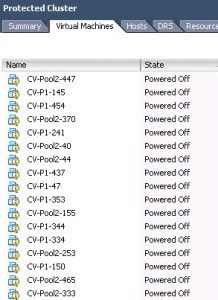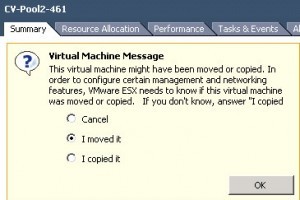On January 10, 2014 a vulnerability in ntpd, the Network Time Protocol daemon, was made public (US CERT VU#348126):
UDP protocols such as NTP can be abused to amplify denial-of-service attack traffic. Servers running the network time protocol (NTP) based on implementations of ntpd prior to version 4.2.7p26 that use the default unrestricted query configuration are susceptible to a reflected denial-of-service (DRDoS) attack. Other proprietary NTP implementations may also be affected.
I have encountered several vCenter Server Appliances, version 5.5.0 build 1476327 and older, that were exposed to the general Internet, and have been found to have this vulnerability. In these cases they were participating in DDoS attacks.
Yesterday I looked to the VMware KB to see if there were any security updates for these vCSAs, or mitigation approaches. Despite the vulnerability being over a month old there is no mention of it from VMware, nor is there a fix of any sort. The vulnerability probably extends to older versions of VMware ESX, too, if you are using NTP on them (as per best practices).
If you are running a vCenter Server Appliance I strongly suggest that you open a case with VMware Support regarding this problem. They have internal KB information about mitigating this. Ask them to search for CVE-2013-5211.
If you want to mitigate this problem on your own there are two ways to do it. First, VMware actually has public KB information in 1006427. It’s just buried (search that KB for CVE-2013-5211). Follow my steps below to edit the file and add their information.
If you want to mitigate the problem in a completely unsupported manner, but the one recommended by SANS and other organizations, you can SSH into the vCSA as root, and add “disable monitor” to /etc/ntp.conf. You can do this with the following steps:
- vi /etc/ntp.conf
- Move the cursor using the arrow keys to just below the entry called “driftfile /var/lib/ntp/drift/ntp.drift”
- Type an ‘i’ to put vi into insert mode. Don’t type the single quotes I use here, just the letter i.
- Type “disable monitor” and hit Enter.
- Type ‘ESC’ to get vi out of insert mode.
- Type ‘:wq’ to get vi to write the file and quit.
- service ntp restart
SPECIAL THANKS for this article: http://lonesysadmin.net/2014/02/13/vmware-vcenter-server-appliance-5-5-0-insecure-ntp-server/

